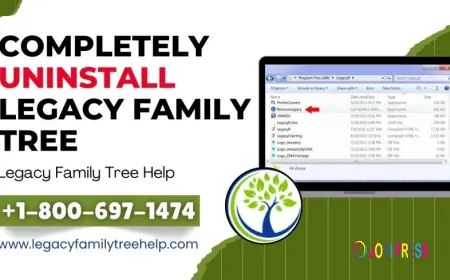Market Trends: US Clearing Houses and Settlements 2030
Regulatory frameworks governing financial markets in the United States have evolved significantly in recent years, with stricter rules aimed at ensuring market stability, reducing systemic risks, and improving transparency.

According to TechSci Research's report, “United States Clearing Houses and Settlements Market – By Region, Forecast & Opportunities, 2030F”, the market was valued at USD 6.75 billion in 2024 and is expected to reach USD 9.02 billion by 2030, growing at a steady CAGR of 5.01%. This market plays an indispensable role in the country’s financial system, providing the foundational support for secure, efficient, and timely processing of financial transactions across a wide range of instruments including equities, derivatives, and fixed-income products.
Clearing houses and settlement systems form the bedrock of modern finance, serving as central intermediaries that manage and verify the finalization of financial trades. Their core responsibilities encompass trade matching, confirmation, margining, netting of obligations, and ensuring timely payments and deliveries. They reduce counterparty risks, prevent defaults, and support overall financial stability, particularly during periods of market stress.
In an era marked by increasing financial sophistication and technology-led disruption, the United States Clearing Houses and Settlements Market has seen a remarkable transformation. Advancements in blockchain, artificial intelligence (AI), and real-time settlement systems have redefined traditional clearing mechanisms, bringing enhanced transparency and robustness to the sector.
Download Free Sample Report: https://www.techsciresearch.com/sample-report.aspx?cid=27292
Emerging Trends in the United States Clearing Houses and Settlements Market
The U.S. clearing and settlement landscape is undergoing rapid innovation. The traditional structures are being reshaped by several transformative trends that are creating new opportunities and challenges for stakeholders.
1. Blockchain and Distributed Ledger Technology (DLT) Integration
One of the most notable trends is the adoption of blockchain and DLT. These technologies allow for immutable, decentralized, and real-time recording of transactions, effectively minimizing reconciliation issues and enhancing transparency. Settlement cycles are being shortened, and clearing houses are able to offer real-time services with reduced operational risk.
2. Rise of Digital Assets and Tokenization
Digital assets, including cryptocurrencies and tokenized securities, are reshaping the nature of assets being cleared and settled. With increasing institutional interest and regulatory recognition, clearing houses are building capabilities to support these instruments. Tokenization of traditional assets such as real estate or bonds is also becoming common, necessitating more agile settlement infrastructure.
3. AI and Machine Learning for Risk Monitoring
Artificial intelligence and machine learning models are increasingly being used for real-time fraud detection, credit risk evaluation, and anomaly identification. These technologies help clearing houses proactively manage systemic risks and ensure secure transaction flows.
4. Cloud-Based Infrastructure
Cloud computing is revolutionizing data management and operational scalability. Many clearing organizations are migrating to cloud-native platforms to handle increasing transaction volumes, ensure business continuity, and enhance agility in responding to regulatory changes.
5. Shift Toward Real-Time Gross Settlement (RTGS)
RTGS systems are gaining prominence for their ability to settle high-value payments in real-time, minimizing settlement risk and enhancing liquidity. This trend is particularly significant for large institutional investors and banks operating in fast-paced markets.
Market Drivers
Several key drivers are propelling the expansion of the United States Clearing Houses and Settlements Market. These include technological advancements, regulatory reforms, increased market activity, and growing demand for secure financial infrastructure.
Technological Advancements in Financial Infrastructure
The market is rapidly evolving in response to innovations in financial technology. The deployment of advanced technologies like blockchain, AI, and cloud infrastructure is not merely a trend but a necessity for improving settlement speed, transparency, and operational efficiency. For example, blockchain eliminates intermediaries and offers secure, real-time clearing of digital assets, enhancing overall trust in the system.
Machine learning algorithms provide predictive insights into settlement failures, market volatility, and operational risks, helping clearing houses preemptively take action. Automation has also led to faster processing of trades and reduced reliance on manual reconciliation.
Regulatory Landscape and Compliance Pressures
The tightening regulatory environment, particularly in the aftermath of the 2008 financial crisis, has significantly increased the importance of robust clearing and settlement systems. Regulations such as the Dodd-Frank Act have mandated the central clearing of over-the-counter (OTC) derivatives to mitigate systemic risk. This has expanded the role of central counterparties (CCPs), boosting demand for specialized clearing services.
Regulators such as the SEC and CFTC now require enhanced transparency, margin requirements, and regular stress testing of clearing entities. Compliance with these mandates has increased the scale and sophistication of clearing infrastructure.
Increased Financial Market Participation
The sheer increase in trading volume, particularly in secondary markets, is another major growth catalyst. Equities, bonds, derivatives, and exchange-traded funds (ETFs) are witnessing higher turnover, necessitating reliable and rapid clearing services. As retail and institutional participation continues to surge, the demand for seamless, secure, and scalable settlement services rises in tandem.
Industry Key Highlights
- Market Value: The market was valued at USD 6.75 billion in 2024.
- Growth Projection: Estimated to reach USD 9.02 billion by 2030.
- CAGR: Expected to grow at 5.01% from 2024 to 2030.
- Leading Segments:
- By Type: The secondary market is the fastest-growing due to increased trade volume in existing securities.
- By Region: The West region leads growth, driven by a tech-savvy financial ecosystem.
- Key Technologies: Blockchain, DLT, AI, cloud computing.
- Regulatory Drivers: Dodd-Frank Act, SEC/CFTC mandates for central clearing of OTC derivatives.
Competitive Analysis
The United States Clearing Houses and Settlements Market is highly competitive, comprising both traditional financial institutions and tech-driven platforms. These entities compete on the basis of transaction speed, regulatory compliance, technological innovation, and customer service.
Major Players in the Market
- Intercontinental Exchange, Inc. (ICE): A major operator of global exchanges and clearing houses, known for its digital transformation initiatives.
- Nasdaq, Inc.: Offers advanced market technology and clearing services, focusing heavily on innovation and blockchain integration.
- Cboe Global Markets, Inc.: Provides multi-asset clearing solutions and is investing in real-time settlement mechanisms.
- JPMorgan Chase & Co.: A key player in both clearing and custody services, leveraging its deep financial expertise and global footprint.
- Bank of America Merrill Lynch: Offers institutional clearing and settlement services with a focus on regulatory compliance and risk management.
- Philadelphia Stock Exchange & National Stock Exchange: Regional players contributing to localized clearing needs.
- Miami International Holdings, Inc. & International Securities L.L.C.: Gaining traction through advanced technology and regional coverage.
- Folio Financial Investments, Inc.: Focuses on innovative, tech-enabled investment clearing solutions.
These organizations are continuously upgrading their technological infrastructure to offer faster, safer, and more efficient services, while maintaining compliance with evolving regulations.
Future Outlook
The United States Clearing Houses and Settlements Market is poised for sustainable long-term growth, driven by a confluence of technological evolution, regulatory momentum, and increased transaction volumes. As the market embraces digital assets, decentralized finance (DeFi), and tokenization, new pathways for clearing and settlement are emerging.
We expect a greater integration of AI for dynamic risk assessment and increased automation to handle complex clearing needs. Real-time clearing and cross-border transaction settlement will gain traction, driven by demands for greater efficiency in global financial markets.
Despite potential challenges such as cybersecurity threats, rising operational costs, and complex regulatory compliance, the industry is well-positioned to navigate the changing landscape. Investments in cybersecurity, cloud resiliency, and advanced analytics will become core priorities.
10 Benefits of the Research Report
- Comprehensive Market Overview: Offers detailed insights into the structure and dynamics of the U.S. clearing and settlement industry.
- Future Market Projections: Provides reliable forecasts up to 2030, supporting strategic planning and investment decisions.
- Competitive Landscape Analysis: Highlights major players, their strategies, and market share.
- Technology Trends: Tracks the influence of emerging technologies like blockchain, AI, and DLT.
- Regulatory Insights: Analyzes the impact of U.S. financial regulations on market evolution.
- Segmented View: Covers market breakdown by type, financial instruments, and region.
- Opportunities & Challenges: Identifies upcoming opportunities and threats impacting market players.
- Customizable Data: Includes provisions for 10% free customization for tailored insights.
- Use-Case Scenarios: Offers real-world applications and implementation strategies.
- Strategic Recommendations: Helps businesses refine operational models and adapt to market shifts.
Conclusion
The United States Clearing Houses and Settlements Market is not only essential for the functioning of the financial system but also a hotbed for innovation and growth. As markets evolve and investor behavior changes, the need for efficient, secure, and transparent settlement mechanisms becomes paramount.
With the support of advanced technologies and robust regulatory frameworks, clearing houses are transitioning from traditional intermediaries to strategic enablers of market efficiency. The industry's resilience and adaptability underscore its critical role in maintaining financial stability and fostering investor confidence.
While challenges like operational complexity and cybersecurity risks persist, the long-term outlook remains optimistic. Continued innovation, strategic partnerships, and regulatory alignment will ensure that the market remains a cornerstone of the U.S. financial ecosystem for decades to come.
Contact Us-
Mr. Ken Mathews
708 Third Avenue,
Manhattan, NY,
New York – 10017
Tel: +1-646-360-1656
Email: [email protected]
Website: www.techsciresearch.com
What's Your Reaction?
 Like
0
Like
0
 Dislike
0
Dislike
0
 Love
0
Love
0
 Funny
0
Funny
0
 Angry
0
Angry
0
 Sad
0
Sad
0
 Wow
0
Wow
0



















































